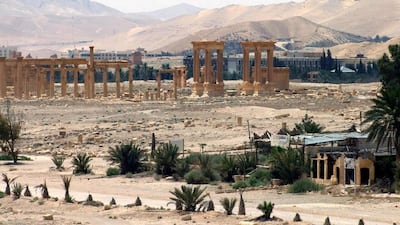Four long years into Syria’s civil war, the conflict has cost the lives of more than 100,000 civilians, forced millions to become refugees and left much of the country’s infrastructure destroyed. While the disintegration of Syria shows no sign of slowing, the international community appears largely uninterested in finding solutions unless a cultural artefact or heritage site is at risk.
ISIL’s capture of the ancient city of Palmyra this week is an example of this and has served to bring the Syrian crisis into sharp focus once again. Based on the group’s destruction of historic artefacts at the Mosul museum and archaeological site of Nimrud in February – for supposedly promoting idolatry – there is a distinct possibility that militants will demolish part or all of the Unesco world heritage site to fulfil its propaganda aims. Across Iraq and Syria, ISIL militants have destroyed similar ancient sites while selling looted antiquities on the black market to fuel their murderous rampages.
The destruction of Palmyra would be an unspeakable tragedy for the entire world and our collective cultural heritage. Yet we must remind ourselves of the true nature of this war and why ISIL is even in Palmyra at all.
As a strategic waypoint, Palmyra is a high-value prize. Situated on the road to Damascus, Homs and points further south, Palmyra is ideally positioned for the extremist group to make fresh advances from the north into the Syrian regime’s heartland. This is not to mention the high-level prison, airbase and intelligence headquarters located in the city.
The capture of Palmyra extends ISIL’s territory while reinforcing its increasingly dominant position as the militant group controlling nearly half of Syria at a time when regime forces are bogged down in battles across the country from Idlib to Deera and Damascus.
It is the utter dysfunction of Bashar Al Assad’s bankrupt rule and his military that has led us to the point where ISIL militants can dangle Palmyra’s potential destruction in front of our eyes. When the dust settles, however, thousands of innocent people will still be dead, millions will be still displaced and Syria’s war will have ravaged the country. We must not be blind to the multifaceted human tragedy that is this conflict.

